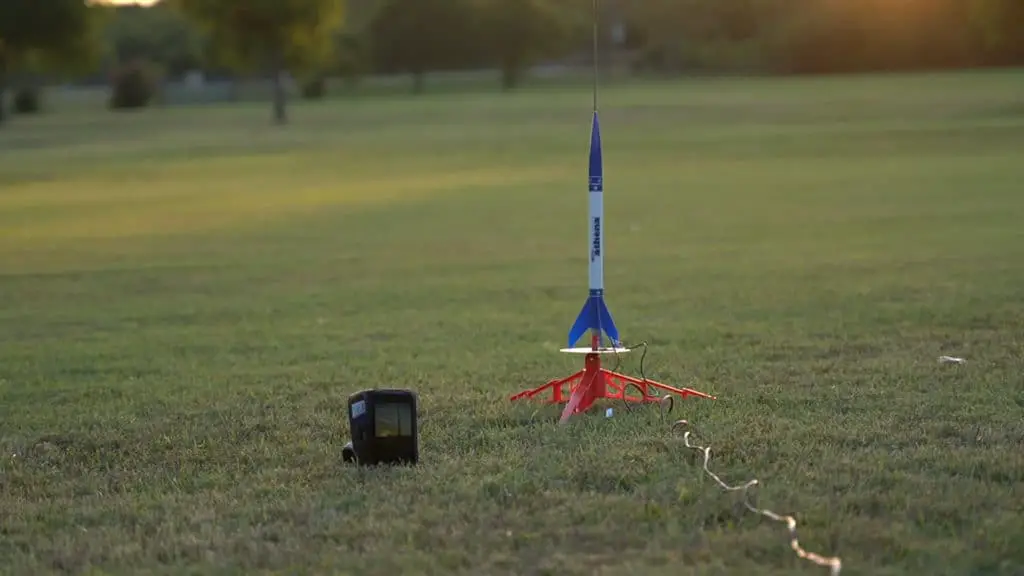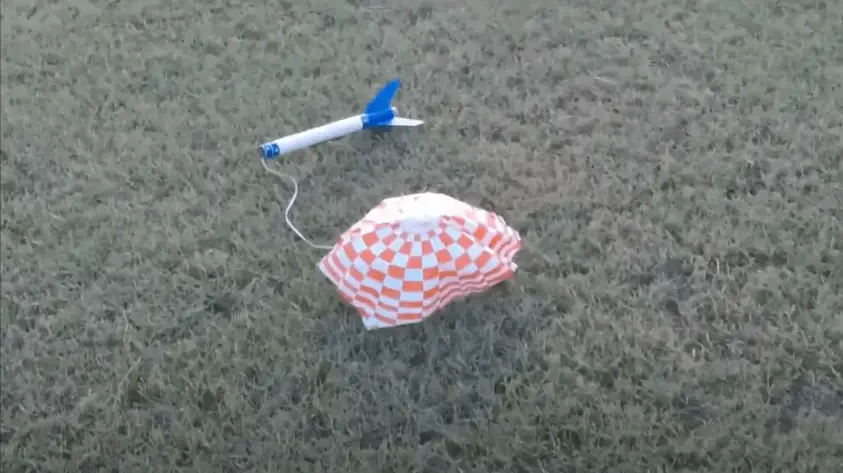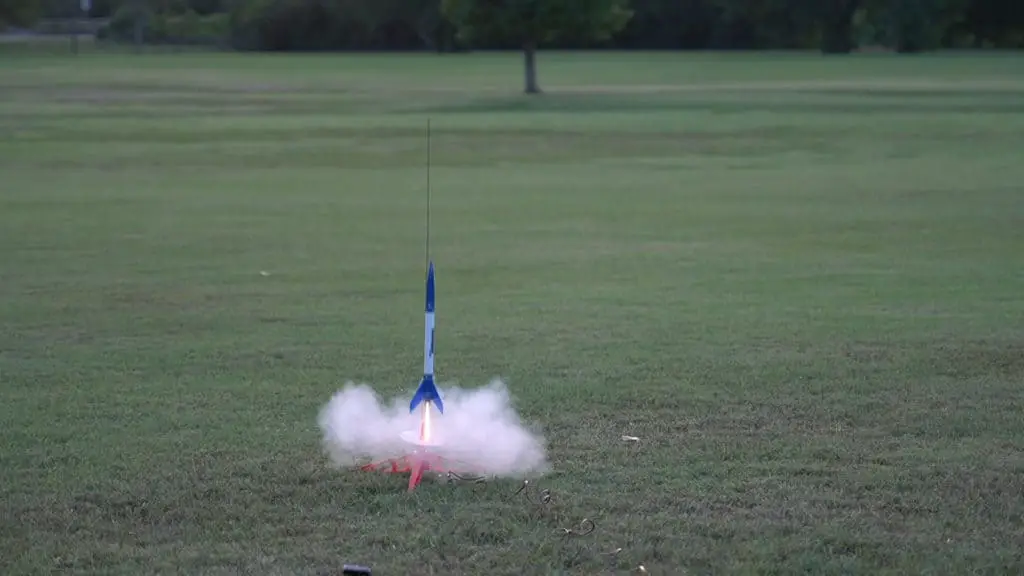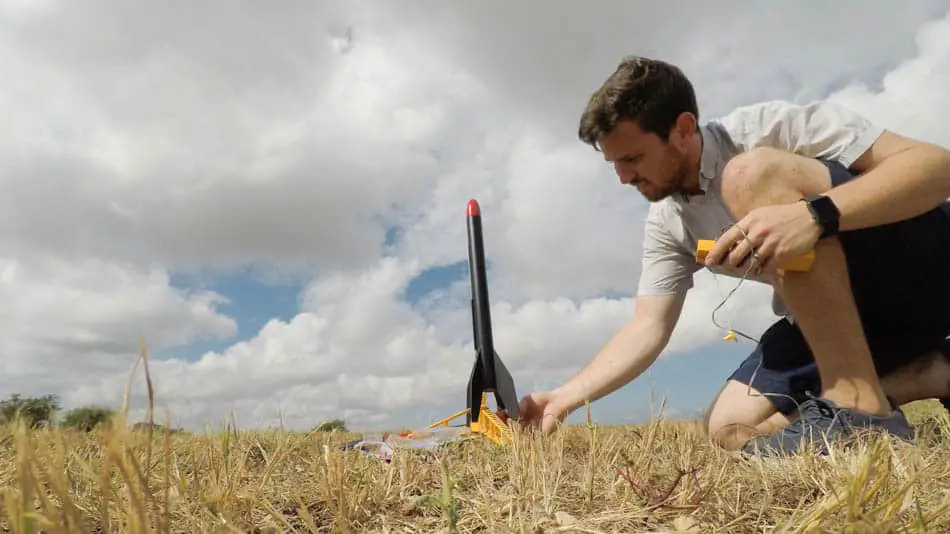
We buy and assemble model rockets to launch them time and again, but is each component of the rocket itself built for this? Are model rockets reusable?
Most model rocket components are reusable including the body, parachute, launch stand, and controller. The engines, igniters, igniter plugs, and recovery wadding are usually only made for one use, however high-powered rockets often use larger reloadable engines to reduce the cost of each launch.
Here, we are going to take a look at the various components of model rockets and cover whether or not they are meant to be used repeatedly or only once. We’ll also cover some signs that the reusable parts of your rocket are ready for repair or replacement.
Are Model Rockets Reusable?
With beginner rockets (think Estes brands and the like), most of the components are reusable.
One of the perks of the hobby is that you can get quite a lot of use out of one rocket! We’ll cover some of the main components associated with the rocket and discuss their reusability.
Model Rocket Body
The actual fuselage of the rocket (body/tube, fins, nose cone) are reusable pending any damage (discussed below).
Even the small ones are fairly durable and can withstand many launches and landings!
Parachute
The rocket’s parachute is reusable, though small tears will require repair or outright replacement.
If you are using streamers as a recovery mechanism, these are reusable as well. Here’s more information on why you would use parachutes vs. streamers.
Wadding
If you are able to locate the wadding after the launch, it is technically reusable though it is recommended to use fresh wadding for each launch.
Model rocket recovery wadding is what separates the engine from the parachute.
When the engine fires the ejection charge upwards through the rocket to deploy the parachute, the recovery wadding is what keeps the parachute from catching fire. If you’re curious, here are common recovery wadding alternatives.
Launch Stand
The launch platform for the rocket is also reusable.
The launch pad both serves as a guide for the initial trajectory of the rocket, as well as a shield from the flames of the engine ignition before the rocket leaves the ground. The launch stand will definitely last a while, though there are a few things to look out for to maintain its integrity, and these are discussed below.
For more reading on launch stands, see our guide to model rocket launch pads.
Controller
The model rocket launch controller is definitely reusable.
While most rocketeers start out with a typical Estes launch controller, one very exciting way to radically change the launch experience is to actually build your own controller.
That is what we did, and we realized that it can be daunting and confusing to figure out how to do it from scratch. So, we documented every step of the process and how we were able to assemble two awesome controllers, and put it into a video course called License to Launch.
The video is below and you can check out the contents of the course here. We promise it will make your launches 10x more fun! It definitely did for us.
Engine Igniters and Plugs
Engine igniters and the plugs that keep them in the engine pre-launch are unfortunately not re-usable. They burn up while lighting the engine and cannot be used again.
Fortunately, when you purchase packs of engines they come with new igniters and safety plugs so the cost is already included in the engine purchase.
Engines
Low-powered rocket engines are for the most part not reusable. The common engines that you would put into an Estes rocket and buy at the hobby store are made for one use only.
However, there are instances of reusable rocket motors where the motor housing is reusable and just needs to be reloaded with propellant.
Reusable motors are more common in high-powered rocketry as the larger motors are more expensive, particularly if you’re only using them once.
HobbyLinc provides some resources to assemble these reusable motors, but you can also find out more by contacting your local NAR (National Association of Rocketry) chapter as they will have members proficient in this area.
For more information on rocket engines, see our model rocket engine classifications guide.
When to replace model rocket components?
While many components of model rockets are meant to be used over and over, they won’t always have an indefinite useful life.
There isn’t a hard and fast rule on how many launches the body or the parachute or the launch stand will be able to withstand, so you will need to keep an eye out for when to possibly replace these components.
In general, you want to repair or replace any of these components whenever they have a near chance of failure which would impact the safety of a launch.
Here are some things to look out for:
Model Rocket Body
The rocket fuselage is usually pretty durable, but you’ll want to keep an eye on the nose cone and the fins and make sure they remain intact.
If a fin is loose, chipped, or missing, the rocket could have altered flight characteristics that make it dangerous. Keep an eye for any large dents or cracks in the nose cone.
Even if they aren’t damaged in a landing, they are easy to accidentally step on at the launch site or in your home and damage.
While most of them are made of plastic and are pretty resilient, personally I would not fly a rocket if any part of the body (nose cone, fuselage, or fins) had been compromised. They are inexpensive to replace and are not worth the chance of a risky flight if they have been damaged.
Parachute
The most common parachute failure is where the strings attach to the parachute. Often times these holes can tear, which can lead to a partial chute opening or complete failure.
Make sure to inspect these before each launch and carry some extra hole reinforcement stickers (link to Amazon for options) with you for quick repairs.
If the parachute itself gets torn I would also replace this prior to any launch as it can jeopardize the decent rate of the rocket or the fullness of the chute opening and possibly damage the rocket during landing.
Wadding
Personally, I would replace this after each launch, but if you are able to locate the used recovery wadding it can possibly be re-used if it’s still intact and not burned or worn. Do so at your own risk.
I would replace this for each launch to ensure the rocket and its parachute is adequately protected against any fire hazard of the parachute deployment.
Launch Stand
The first part to wear out will be the blast deflector. Eventually you can have holes in the blast plate, which at that point I would replace it.
Also ensure that you launch rod is not bent in any way. It is easy to accidentally bend these by stepping on them, and they’re inexpensive to replace. You want to ensure the rocket has a very smooth launch off of the pad.
Controller
Most commonly you’ll just need to replace the batteries on controllers and not the controller itself unless you are wanting to build your own.
We mentioned it above but we’ll say it again, we highly recommend our License to Launch course to build your own controller – we promise it will make your launches so much more fun!
In Conclusion
For the most part, model rockets are made to be used over and over again. While the engines will need to be replaced or re-loaded for each flight, most of the other components of the rocket and meant to be reused. This keeps the expense of the hobby relatively low as one rocket can last you a very long time!
Keep an eye out for your other model rocket components to see when they are beginning to wear or possibly fail, as you’ll want to repair and or replace those over time to maintain the safety of each launch.












